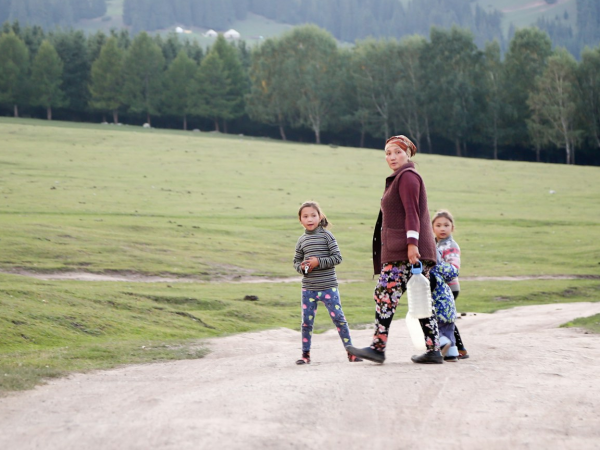The cities of Seoul and Singapore offer valuable insights into the potential of neighbourhood improvement as a social policy that can strengthen social cohesion in neighbourhoods and cities.
Social cohesion and sustainable development of cities
Cities are vital to national and global economic growth. They are the centres of social, cultural, and political life. However, they are also where the consequences of growing global risks are most acutely experienced. Climate change, global pandemics, food crises, or economic and social disparities can have the most devastating impact on neighbourhoods and cities. These conditions can have an even more damaging impact on deprived neighbourhoods that lack necessary infrastructure, resources, and capacity to respond to the global risks.
At the same time, neighbourhoods offer opportunities to address these risks in an effective and sustainable way. Providing sufficient resources and building community capacity to prepare for, resist, and recover from external and internal disturbances is considered crucial for addressing neighbourhood resilience and sustainability challenges in cities in the long run. Neighbourhood resilience is strengthened by social cohesion, community participation and communication, as well as collaboration between citizens, civil society and the state.
Neighbourhoods with strong social cohesion are connected and inclusive. They are better equipped to address the global risks than the neighbourhoods experiencing social erosion and exclusion. Social cohesion in neighbourhoods refers to existing social networks and their capacity to provide social support, contribute to solidarity and trust, create common values and shared sense of belonging, and facilitate social learning, experimentation, and social innovation. In this way, social cohesion can contribute to neighbourhood resilience and sustainable development of cities.
Strengthening of social cohesion in neighbourhoods and cities has become an integral part of not only municipal and national but of global sustainability agenda too. The 2030 Agenda for Sustainable Development, for instance, emphasises the importance of building cohesive, safe and resilient communities for the sustainable development of cities. Likewise, the New Leipzig Charter recognises that sustainability challenges are often more pronounced at the neighbourhood level and acknowledges the transformative potential of neighbourhoods and cities in addressing these challenges.
Neighbourhood improvement in Seoul and Singapore
Cities in East and South-East Asia experienced rapid economic growth and urban development that paid little attention to sustainability in the past. While they are among the largest metropolitan areas in the world, they are also one of the most vulnerable to the impacts of climate change. Dense and overcrowded neighbourhoods are often exposed to extreme weather, air pollution, and health risks which negatively affect their quality of life. Moreover, traditional neighbourhoods that used to provide social support and create a shared sense of belonging were largely demolished to make way for new housing. Such market-driven urban development contributed to social erosion rather than social cohesion.
Seoul in South Korea and Singapore show the case in point. The two countries are known as Asian Tigers for their rapid economic growth and urban development in the past. Their GDP per capita grew about 200 times from 1960 to 2022. In this period, the population of Seoul and Singapore increased for 322 percent and 270 percent respectively. Nowadays, Seoul and Singapore are among the most important global cities. The 2023 Global Power City Index, for instance, places Singapore as the 5th and Seoul as the 7th highest-ranking city worldwide in terms of economy, R&D, cultural interaction, livability, environment and accessibility.
However, in terms of quality of life, Seoul and Singapore rank comparatively low. According to the 2023 Global Liveability Index, Singapore is ranked 34th, while Seoul is ranked 59th. Both cities face some similar sustainability challenges, including growing social disparities, low birth rates, poverty among the elderly, and high living costs. Moreover, South Korea and Singapore were reported to have experienced a decline of social support networks, solidarity, and shared identities in the near past. The number of individual respondents who shared that they have someone to rely on in South Korea was the second lowest among reporting OECD countries.
Neighbourhood improvement is partly to blame. In the past, it focused on demolishing deprived neighbourhoods and constructing large housing complexes with limited community participation or collaboration between stakeholders. Evictions of the residents destroyed established social networks, contributing little to social cohesion. However, the state has recently taken a more active role in addressing sustainability challenges in Seoul and Singapore and has changed its approach to neighbourhood improvement. The latter has been recognised not only for its role in improving the decaying built environment but also for implementing sustainability agendas.
Strengthening social cohesion in Samdeok Maeul and Tampines
In 2012, the Seoul Metropolitan Government introduced the Residential Environment Management Project, a new community-based approach that aimed to comprehensively improve deprived neighbourhoods. Similarly, in 2013, the Housing and Development Board in Singapore launched the Hello Neighbour! pilot project to increase community participation in neighbourhood improvement of ageing public housing complexes. Despite their differences, both approaches considered the strengthening of social networks and shared sense of belonging as important aims of neighbourhood improvement. They were funded and managed by public institutions, which saw community participation and collaboration crucial for successful implementation.
Samdeok Maeul was one of the first neighbourhoods in Seoul to benefit from such an approach. Despite having a relatively good quality of life, the small neighbourhood on the city outskirts lacked infrastructure and social amenities in the past, and the residents did not have close relations with each other. In Singapore, the Hello Neighbour! pilot project was first implemented in a large public housing complex in Tampines Central. Like Samdeok Maeul, the neighbourhood had a peripheral location and previously lacked social amenities. Moreover, its ageing population reportedly had weak social bonding.
The Residential Environment Management Project and Hello Neighbour! have improved the quality of life in Samdeok Maeul and Tampines. The newly built community centres have brought the residents together, improved their social relationships, and fostered a sense of belonging in the neighbourhood. This was not solely a result of new social amenities, but also due to community participation and collaboration between stakeholders. The stakeholders were engaged in planning and managing the neighbourhood improvement through interviews, surveys, focus groups discussions, the use of social media, public presentations, and community workshops.
Community workshops in particular, facilitated collaboration among residents, grassroots leaders, community organisers, experts, and public officials. This provided an opportunity for them to identify common problems and goals, discuss possible solutions, make decisions together, and learn from each other, which not only facilitated social learning but also built trust among them. As a result, the neighbourhood improvement has contributed to stronger social cohesion in Samdeok Maeul and Tampines.
Neighbourhood improvement as social policy by other means?
The Residential Environment Management Project in Samdeok Maeul and Hello Neighbourhood! in Tampines show that neighbourhood improvement can strengthen social cohesion and neighbourhood resilience. Both approaches can be seen as a form of social policy by other means with active involvement of nonstate stakeholders although the state has played a crucial role in enabling community participation in neighbourhood improvement. However, the state has also co-opted and exerted strong control over community participation, which has hindered its transformative potential to address neighbourhood resilience and sustainability challenges in Seoul and Singapore.
Assessing the impact of neighbourhood improvement on the sustainable development of Seoul and Singapore comprises many dimensions that are beyond the scope of this essay. Nevertheless, it is clear that Samdeok Maeul and Tampines have served well as best practices. The Residential Environment Management Project was launched in some seventy neighbourhoods before the current Seoul Metropolitan Government deregulated housing development again and changed the neighbourhood improvement approach from community-based back to market-driven. In contrast, the state in Singapore continues to expand community participation in neighbourhood improvement, albeit with its own political agenda.
The cases of Seoul and Singapore offer valuable insights into the potential of neighbourhood improvement as a means of strengthening social cohesion in neighbourhoods and cities, and as a form of social policy by other means. However, these cases also highlight the limitations of this approach in institutional contexts with a strong state.
The essay is based on research conducted at the Seoul National University Asia Center in 2017. Findings are further developed in the book Emerging Civic Urbanisms in Asia: Hong Kong, Seoul, Singapore, and Taipei beyond Developmental Urbanization.
Header photo by Sharing for Future, 2015








